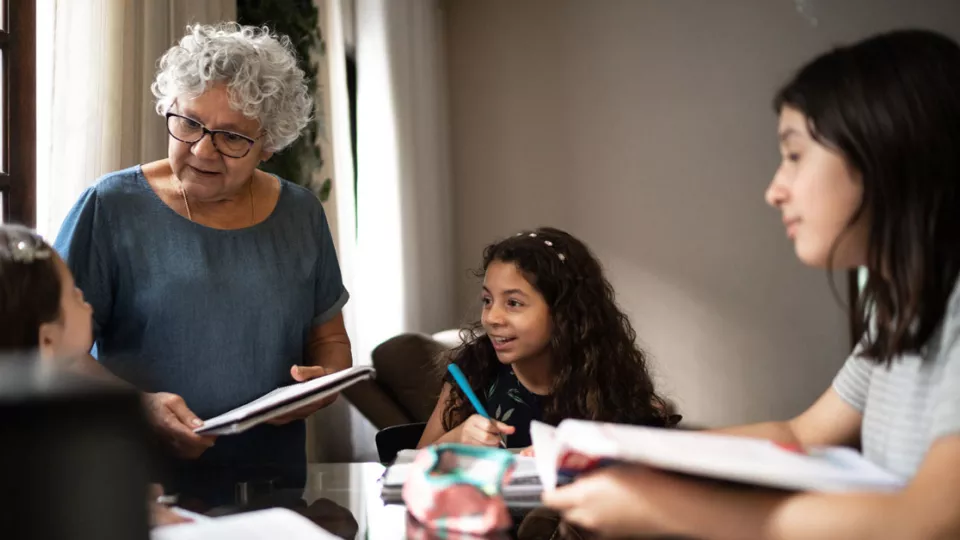
Children’s Hospital Los Angeles is U.S. site for $7M study of household transmission of COVID-19
Los Angeles (September 14, 2020) — One of the mysteries about severe acute respiratory syndrome coronavirus 2 (SARS-CoV-2), the virus that causes COVID-19, is how it is spread within households, including why some family members develop the viral infection and others do not. Is there a way to predict who will be symptomatic or asymptomatic and how long someone remains infectious? Are asymptomatic and symptomatic cases equally able to transmit infection? Are there “super-spreaders” within families—and do they include children?

Researchers at The Saban Research Institute of Children’s Hospital Los Angeles, as well as in Nicaragua and New Zealand, are enrolling 250-325 households in a new study designed to answer these questions. The study was awarded $7.1 million by the National Institute of Allergy and Infectious Diseases (NIAID), part of the National Institutes of Health.
“We have seen some families where only one person was infected and others where the entire 11-person household became infected,” says Pia Pannaraj, MD, MPH, of Children’s Hospital Los Angeles, who is leading the U.S. study site. “The pattern varies widely, probably due to a combination of factors, from a family’s living situation to their individual immune systems.”
The effort to learn more about household transmission is an extension of a seven-year NIAID-funded study into influenza, which focuses on how a child’s first exposure to the flu virus might produce a long-lasting immunological response. This “imprinting” can impact the child’s ability to respond to future flu strains. The influenza study, which launched in fall 2019, will involve recruitment of about 3,100 children in Los Angeles, New Zealand, and Nicaragua and 12 institutions from all over North America, Australia, and New Zealand.
The multi-center investigation into the flu virus was already in place when the worldwide outbreak of COVID-19 hit. “We immediately realized the value in also knowing more about what happens after the first infection with SARS-CoV-2,” Dr. Pannaraj says.
Among the key questions investigators want to explore is how differences in family members’ immune systems may dictate transmission patterns. Also of interest is whether children contribute to household transmission of the novel coronavirus. “With the flu, we see that children are the main vectors, or infection hosts, who spread it to other people,” says Dr. Pannaraj. “For COVID-19, we don’t yet know the role children play in transmission within a family. Our goal with this study is to find out.”
Children’s Hospital Los Angeles researchers received $1.2 million of the total NIAID funding for the U.S. portion of the study, and plan to enroll up to 100 households. At least one member of each participating household must have tested positive for SARS-CoV-2 infection. The study spans all ages, from newborns to seniors.
Investigators will follow each household over the two-year study, enabling them to observe when each family member becomes symptomatic or infected (or not), along with the pattern of infection, such as whether everyone gets infected around the same time or if the virus is passed sequentially from person to person.
In addition to providing information that could help limit transmission between family members, findings from this study will be used to optimize vaccination strategies and COVID-19 vaccine development.
Funding for the study is provided under NIAID grant #U01AI144616 to St. Jude Children’s Research Hospital, University of Michigan, University of Rochester, Washington University, Institute of Environmental Science & Research Limited, Sustainable Sciences Institute, and Children’s Hospital Los Angeles.
About Children's Hospital Los Angeles
Founded in 1901, Children's Hospital Los Angeles is the highest-ranked hospital in California and fifth in the nation on the prestigious U.S. News & World Report Honor Roll of best children’s hospitals. U.S. News ranks Children’s Hospital Los Angeles in all 10 specialty categories. Clinical care at the hospital is led by physicians who are faculty members of the Keck School of Medicine of USC through an affiliation dating from 1932. The hospital also leads the largest pediatric residency training program at a freestanding children’s hospital in the Western United States. The Saban Research Institute of Children’s Hospital Los Angeles is home to all basic, translational, clinical and community research conducted at the hospital, allowing proven discoveries to quickly reach patients. Our mission: to create hope and build healthier futures. To learn more, follow us on Facebook, Instagram, LinkedIn, YouTube and Twitter, and visit our blog at CHLA.org/blog.


